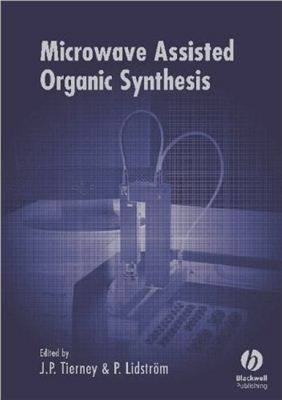CRC Press, 2005. – 280 p.
Microwave-assisted organic chemistry has during the last years moved from being an obscurity in the laboratory environment to be an invaluable tool within chemistry research. Although the first reports on microwave-assisted organic synthesis dates back as far as 1986, the breakthrough of the technique as a routine tool in synthesis has been slow. The main reason has been difficulties in conquering the forces of the flame, i.e. there has been a lack of dedicated equipment available to perform chemistry using microwave irradiation. This lack of dedicated equipment led to the use of domestic appliances, leading to very unpredictable and sometimes devastating results. It also gave the technique an aura of black art. However, with the introduction of dedicated equipment, novel, interesting, reproducible chemistry has been and is continuously performed.
In this book we have tried to assemble a selection of authors to shine light on the underlying principles of microwave dielectric heating, how this dielectric heating has been used in chemistry to give us microwave-assisted organic synthesis applied on a wide variety of reaction types as well as on how microwave-assisted organic synthesis has impacted the chemistry research within industry. These chapters have been written by some of the most prominent researchers of mode microwave-assisted organic synthesis and we hope that you will find it both interesting and enlightening.
Microwave-assisted organic chemistry has during the last years moved from being an obscurity in the laboratory environment to be an invaluable tool within chemistry research. Although the first reports on microwave-assisted organic synthesis dates back as far as 1986, the breakthrough of the technique as a routine tool in synthesis has been slow. The main reason has been difficulties in conquering the forces of the flame, i.e. there has been a lack of dedicated equipment available to perform chemistry using microwave irradiation. This lack of dedicated equipment led to the use of domestic appliances, leading to very unpredictable and sometimes devastating results. It also gave the technique an aura of black art. However, with the introduction of dedicated equipment, novel, interesting, reproducible chemistry has been and is continuously performed.
In this book we have tried to assemble a selection of authors to shine light on the underlying principles of microwave dielectric heating, how this dielectric heating has been used in chemistry to give us microwave-assisted organic synthesis applied on a wide variety of reaction types as well as on how microwave-assisted organic synthesis has impacted the chemistry research within industry. These chapters have been written by some of the most prominent researchers of mode microwave-assisted organic synthesis and we hope that you will find it both interesting and enlightening.

